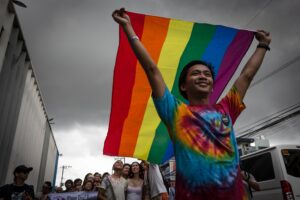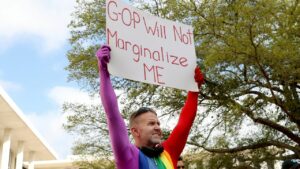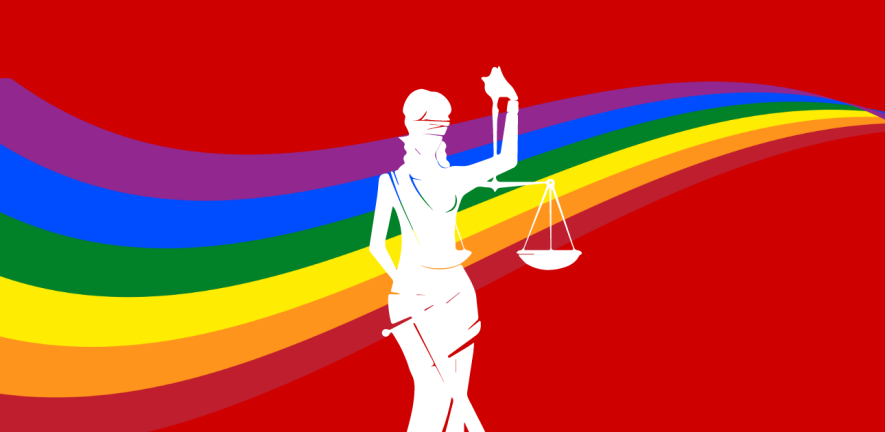The fight for reproductive rights has been a long-standing battle, and within this broader context, the rights of LGBTQ individuals have also come to the forefront. LGBTQ reproductive rights encompass the freedom to make decisions regarding reproductive health, family planning, and parenthood without facing discrimination or barriers due to one’s sexual orientation or gender identity. In this article, we will explore the historical context, challenges faced, legal landscape, and the importance of LGBTQ reproductive rights.
Contents
- 1 Historical Context
- 1.1 Pre-Stonewall Era (Before 1969)
- 1.2 Stonewall Riots and Gay Liberation Movement (Late 1960s to early 1970s)
- 1.3 HIV/AIDS Crisis (1980s to early 1990s)
- 1.4 Legal Advances and Activism (1990s to early 2000s)
- 1.5 Marriage Equality and Expanded Rights (2000s to present)
- 1.6 Ongoing Challenges and Intersectionality
- 2 Challenges and Discrimination
- 3 LGBTQ Parenthood
- 4 LGBTQ Adoption and Fostering
- 5 Surrogacy and Gestational Carriers
- 6 Transgender Reproductive Rights
- 7 Conclusion
Historical Context

The historical context of LGBTQ reproductive rights is complex and has evolved over time. LGBTQ individuals have faced significant challenges in accessing reproductive healthcare and exercising their reproductive rights due to discrimination, legal barriers, and societal prejudice. Here is an overview of the historical context:
Pre-Stonewall Era (Before 1969)
- LGBTQ individuals faced widespread societal discrimination and persecution, with homosexuality often considered illegal and stigmatized.
- Reproductive rights were primarily framed within heterosexual contexts, and LGBTQ individuals faced significant barriers in accessing reproductive healthcare.
Stonewall Riots and Gay Liberation Movement (Late 1960s to early 1970s)
- The Stonewall Riots in 1969 marked a turning point in LGBTQ history, sparking the modern gay liberation movement.
- The movement advocated for LGBTQ rights, including the right to sexual expression and autonomy.
- During this time, discussions around reproductive rights started to expand to include LGBTQ individuals, though progress was limited.
HIV/AIDS Crisis (1980s to early 1990s)
- The HIV/AIDS crisis had a profound impact on the LGBTQ community and affected discussions around reproductive rights.
- Reproductive health concerns shifted to focus on HIV prevention, testing, and care within LGBTQ communities.
- The crisis also highlighted the discrimination faced by LGBTQ individuals and the need for comprehensive healthcare that addresses their unique needs.
Legal Advances and Activism (1990s to early 2000s)
- The LGBTQ rights movement gained momentum, leading to legal advances such as the decriminalization of homosexuality and anti-discrimination protections in various countries.
- Reproductive rights advocacy began to encompass LGBTQ individuals, addressing issues like adoption, assisted reproductive technologies (ART), and parenting rights.
- However, legal and societal challenges persisted, and LGBTQ individuals often faced barriers to accessing reproductive healthcare and parental rights.
Marriage Equality and Expanded Rights (2000s to present)
- The push for marriage equality gained traction globally, resulting in significant legal victories.
- Marriage equality allowed same-sex couples to access various reproductive rights, such as adoption, assisted reproduction, and legal recognition as parents.
- LGBTQ reproductive rights continued to be a topic of advocacy and activism, focusing on inclusive healthcare, fertility treatment access, and surrogacy rights.
Ongoing Challenges and Intersectionality
- While progress has been made, LGBTQ individuals still face challenges in accessing reproductive healthcare and rights.
- Transgender and non-binary individuals, in particular, face unique obstacles, including healthcare discrimination and limited access to fertility preservation and gender-affirming care.
- Intersectionality plays a crucial role, as LGBTQ individuals from marginalized communities may face compounded discrimination and barriers to reproductive rights.
It’s important to note that the historical context of LGBTQ reproductive rights varies across countries and regions, as legal frameworks and societal attitudes differ significantly.
Challenges and Discrimination

LGBTQ individuals have faced numerous challenges and forms of discrimination regarding their reproductive rights throughout history. Here are some key challenges they have encountered:
- Legal Barriers: Historically, many jurisdictions criminalized same-sex sexual activity, which not only stigmatized LGBTQ individuals but also restricted their rights to engage in reproductive activities. Laws criminalizing homosexuality limited access to reproductive healthcare, such as contraception, fertility treatments, and adoption.
- Stigmatization and Social Prejudice: LGBTQ individuals have often faced societal stigma and prejudice, leading to discrimination in healthcare settings. This discrimination can result in inadequate or biased care, limited access to reproductive services, and reluctance from healthcare providers to address their specific reproductive health needs.
- Inequality in Family and Parenting Rights: LGBTQ individuals have encountered obstacles when it comes to building families and parenting. Adoption agencies and fertility clinics have historically exhibited discriminatory practices, denying LGBTQ individuals the right to adopt or access assisted reproductive technologies. This has restricted their ability to have biological or legal ties to their children.
LGBTQ Parenthood
LGBTQ parenthood refers to the experience of individuals and couples within the LGBTQ community becoming parents, either through biological means, adoption, foster care, or other family-building methods. Over the years, societal attitudes and legal frameworks have evolved to recognize and support LGBTQ individuals and couples in their journey towards parenthood.
Here are some important aspects of LGBTQ parenthood:
- Biological Parenthood: LGBTQ individuals and couples have the same biological capabilities as cisgender heterosexual individuals to become parents. Same-sex couples, for example, can explore assisted reproductive technologies (ART), such as in vitro fertilization (IVF) and intrauterine insemination (IUI), to have biological children. In these cases, one partner may provide the sperm or egg, while the other partner may carry the pregnancy, depending on their individual preferences and circumstances.
- Adoption: Adoption is a common pathway for LGBTQ individuals and couples to become parents. Adoption agencies and laws in many countries and states have become more inclusive, allowing LGBTQ individuals to adopt children and provide loving and supportive homes.
- Foster Care: LGBTQ individuals and couples can also become foster parents and provide temporary care for children who are unable to live with their birth families. Just like adoption, foster care agencies and systems have become more inclusive in recent years.
LGBTQ Adoption and Fostering
LGBTQ adoption and fostering have been important topics in the fight for LGBTQ rights and have experienced significant progress in recent years. However, challenges and discrimination persist in many regions. Here’s an overview of the issues surrounding LGBTQ adoption and fostering:
- Historical Challenges: In the past, LGBTQ individuals and couples faced significant barriers to adopting or fostering children due to discriminatory laws and societal attitudes. Many jurisdictions explicitly prohibited same-sex couples from adopting or fostering parenting, or agencies would discriminate against LGBTQ individuals based on their sexual orientation or gender identity.
- Legal Progress: Over time, legal advancements have occurred in various countries to address these discriminatory practices. Many jurisdictions have enacted laws and policies that explicitly prohibit discrimination in adoption and foster care based on sexual orientation or gender identity. Some countries, like the United States, have seen significant legal victories, such as the legalization of same-sex marriage, which has positively influenced adoption and fostering rights for LGBTQ individuals.
- Varying International Perspectives: The legal landscape for LGBTQ adoption and fostering varies widely across countries. While some nations have embraced inclusivity and equality, others still have restrictive laws or cultural biases against LGBTQ individuals becoming adoptive or foster parents. This can pose challenges for LGBTQ individuals looking to adopt or foster children, particularly when considering international adoption.
Surrogacy and Gestational Carriers
Surrogacy and gestational carriers play a significant role in LGBTQ reproductive rights, as they provide alternative pathways for same-sex couples and individuals to have biological children. LGBTQ individuals and couples have faced unique challenges and barriers when it comes to starting families, and surrogacy can be a viable option to overcome some of these obstacles.
Surrogacy is a process in which a woman carries and gives birth to a child on behalf of someone else, often referred to as the intended parents. There are two main types of surrogacy: traditional surrogacy and gestational surrogacy. In traditional surrogacy, the surrogate’s egg is used, making her the biological mother of the child. In contrast, gestational surrogacy involves the use of the intended parent’s eggs or donor eggs, and the surrogate is not biologically related to the child she carries.
Transgender Reproductive Rights

Transgender reproductive rights are a crucial aspect of overall LGBTQ healthcare and human rights. These rights center around the ability of transgender individuals to make informed decisions about their reproductive health, access appropriate and affirming reproductive healthcare services, and pursue options for starting or expanding families that align with their gender identity and personal choices.
The specific reproductive rights and healthcare needs of transgender individuals can vary depending on their individual circumstances, including their gender identity, medical history, and healthcare goals. Here are some key considerations related to transgender reproductive rights:
- Access to Inclusive Reproductive Healthcare: Transgender individuals have the right to access healthcare services that are inclusive, respectful, and affirming of their gender identity. This includes routine reproductive healthcare, such as gynecological exams and family planning services. Healthcare providers should be knowledgeable about transgender health issues and ensure that their services are accessible to all patients, regardless of gender identity.
- Fertility Preservation: Some medical interventions related to gender transition, such as hormone therapy and gender-affirming surgeries, can affect fertility. Transgender individuals who wish to preserve their fertility for future family-building options should have access to information and services related to fertility preservation, such as freezing eggs, sperm, or embryos.
Conclusion
LGBTQ reproductive rights are an essential component of the broader struggle for equality and autonomy. By recognizing and addressing the unique challenges faced by LGBTQ individuals in matters of reproductive health, family planning, and parenthood, we can create a more inclusive and equitable society. Upholding the principles of human rights, compassion, and understanding is key to ensuring that everyone has the freedom to make choices regarding their reproductive journey.
Life may sometimes be challenging for people from LGBTQ community, but Online LGBTQ Counseling can help. Get experienced LGBTQ therapists at PrideMantra: Book a trial LGBTQ therapy session.


